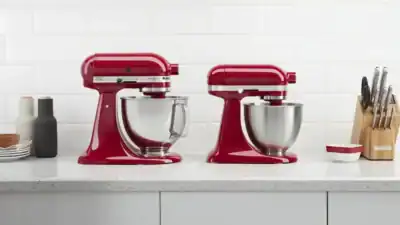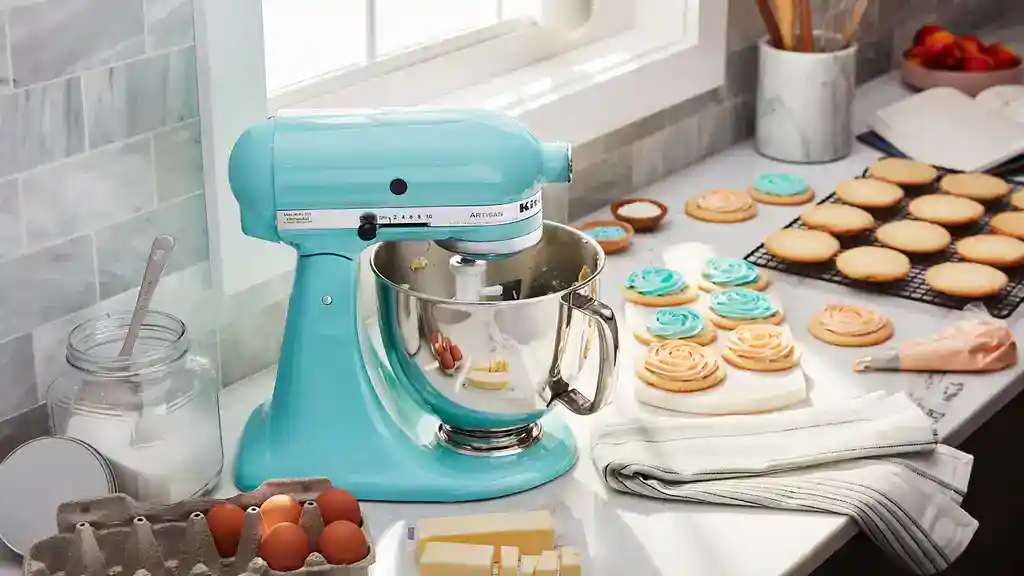
A stand mixer isn’t just a luxury appliance for occasional bakers—it’s a versatile kitchen workhorse that can transform your cooking experience. From perfectly whipped cream to homemade pasta, the right stand mixer unlocks culinary techniques that might otherwise seem intimidating or time-consuming. Understanding these key uses helps justify the investment and ensures you get the most out of your mixer.
Many home cooks buy stand mixers with big baking plans, only to use them for simple cookie dough and cake batter. While these are useful, they hardly show what a quality mixer can do. This guide details seven key uses that reveal the real versatility of stand mixers, with specific model recommendations to help you find the right one for your baking goals.


Bread and Dough Making: The Foundation of Great Baking

Bread making might be the most transforming use of a stand mixer. The tiring, arm-straining task of hand-kneading heavy doughs becomes easy when your mixer takes over. High-quality mixers develop gluten structure quickly and reliably, creating better texture and rise in your baked loaves.
The dough hook attachment replicates the stretching and folding action of hand kneading while keeping a steady speed and pressure. This leads to more even gluten development and improved bread structure. From simple sandwich loaves to intricate sourdoughs and enriched doughs like brioche, a stand mixer does the heavy lifting, so you can concentrate on technique and timing.
Professional bakers rely on mixers for a good reason—they produce more consistent results than hand kneading while saving time and energy. Home bakers can achieve similar consistency, making weekly bread baking a realistic goal rather than an occasional weekend project.
Whipped Cream and Meringues: Light and Airy Perfection
The wire whip attachment is great for adding air into ingredients, creating stable foams that serve as the base for many desserts. Perfect whipped cream needs precise timing—using the mixer at a consistent speed helps prevent over-whipping and achieves the right texture every time.
Meringues, often intimidating for home bakers, become approachable with a stand mixer. The machine whips egg whites to the right stages while you gradually add sugar, creating stable peaks that hold their shape for pavlovas, macarons, or chocolate mousse. The hands-free operation allows you to monitor progress and add ingredients at exactly the right moment.
Temperature control is essential for these uses. The mixer’s steady action prevents heat buildup that can occur with hand whisking, maintaining the cool temperatures required for the most stable foams. This makes techniques that were once difficult accessible to home cooks.
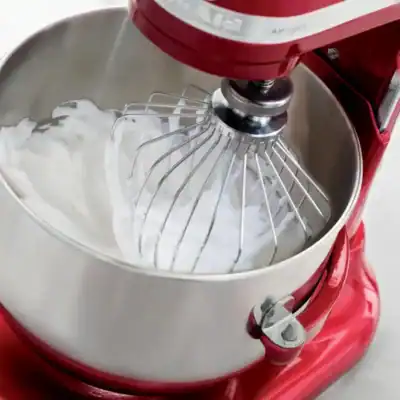
Cookie and Cake Batter: Consistent Results Every Time
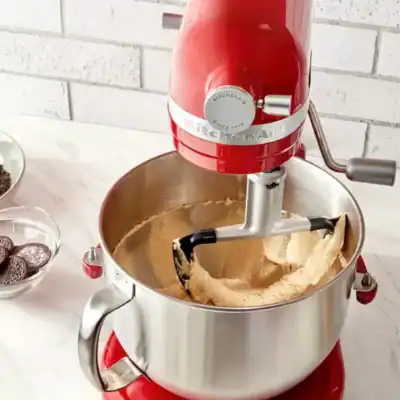
Many home bakers already use their mixers for cookies and cakes, but mastering proper technique dramatically improves results. The creaming method—beating butter and sugar until light and fluffy—lays the groundwork for tender, well-textured baked goods.
The flat beater attachment is excellent for this task, adding air without overmixing the batter. Proper creaming takes 3-5 minutes and results in a visible change in color and texture. This mechanical leavening greatly influences the final texture of cookies and cakes, making the difference between dense, heavy results and light, tender perfection.
Temperature plays a crucial role in these applications. Room temperature butter creams smoothly, while cold butter doesn’t incorporate air efficiently. The mixer’s steady action ensures uniform mixing throughout the bowl, preventing streaks and lumps that can form with hand mixing.
Fresh Pasta: Restaurant-Quality Noodles at Home
Making fresh pasta shifts from a special occasion project to a weekly routine when you have the right mixer and attachments. The pasta roller and cutter attachments turn your stand mixer into a full pasta-making station, creating restaurant-quality noodles with little effort.
The mixer first creates perfect pasta dough—its consistent kneading develops just enough gluten for the right texture without making the dough tough. Once rested, the pasta roller attachment gradually thins the dough to precise thicknesses, while cutter attachments produce uniform noodles.
Fresh pasta cooks in just 2-3 minutes and has a tender, silky texture that you can’t get with dried pasta. The ability to control ingredients allows you to make egg pasta, spinach noodles, or gluten-free options tailored to your dietary needs and preferences.
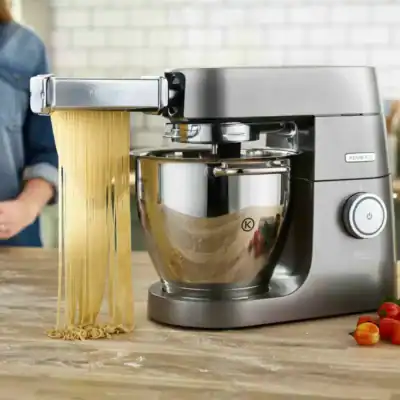
Mashed Potatoes and Vegetables: Smooth Comfort Foods
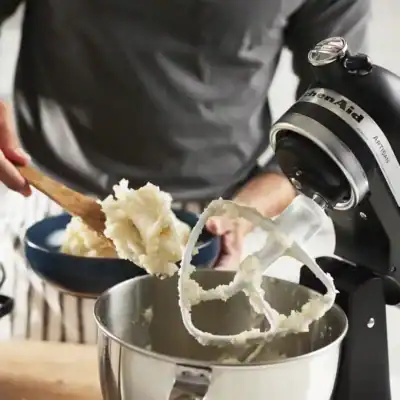
Beyond sweet recipes, stand mixers are great for making impossibly smooth mashed potatoes and other vegetable purees. The flat beater attachment quickly and thoroughly breaks down cooked potatoes, removing lumps and creating a restaurant-quality texture.
The key is using the right speed and timing. Start at a low speed to break down the potatoes, then gradually increase the speed while adding warm butter and cream. Consistent mixing ensures even blending without overworking, which can prevent potatoes from becoming gluey.
This technique works just as well with other root vegetables—carrots, parsnips, turnips, and cauliflower all benefit from the mixer’s thorough blending. The result is smoother, more luxurious side dishes that boost everyday meals.
Homemade Butter and Cheese: Farm-Fresh Flavors
Making butter at home might seem old-fashioned, but it’s surprisingly easy using a stand mixer and results in a better flavor than store-bought options. Start with heavy cream and let the wire whip attachment do its work—after about 10-15 minutes, the cream turns into butter and buttermilk.
The process is fascinating to observe: cream turns into whipped cream, then over-whipped cream, and eventually separates into butter and liquid. The fresh butter has a clean, sweet flavor and can be flavored with herbs, garlic, honey, or other seasonings.
Simple soft cheeses like ricotta and farmer’s cheese also become easier to make with a mixer. The gentle mixing helps separate curds and whey while preserving delicate textures that hand stirring might damage.
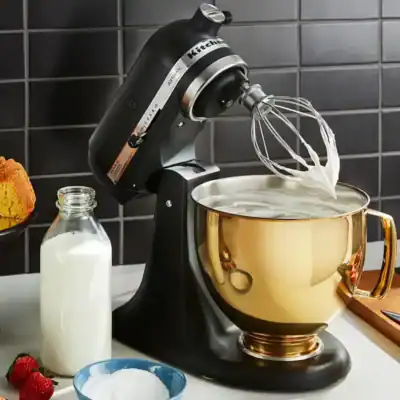
Meat and Vegetable Processing: Beyond Basic Mixing
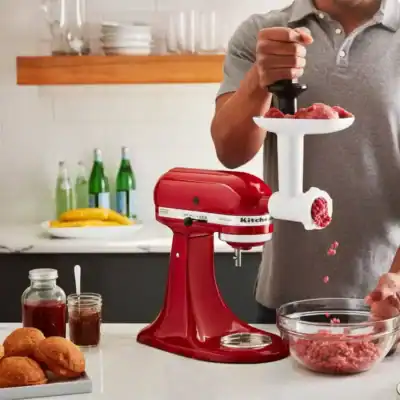
Stand mixer attachments turn your machine into a full food processing station. The food grinder attachment lets you control the quality and fat content of meat for personalized ground beef, pork, or poultry. This guarantees freshness and removes additives often found in store-bought ground meat.
The vegetable slicer attachment manages repetitive prep tasks like slicing cucumbers for pickles or shredding cabbage for coleslaw. These attachments operate faster than manual methods and deliver more consistent results.
Sausage-making becomes easier with the grinder and sausage stuffer attachments. Having control over ingredients and seasonings lets you create custom flavors that you can’t find commercially, from traditional Italian sausages to inventive fusion varieties.
Best Stand Mixers for These Applications
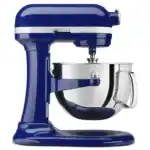
KitchenAid Artisan Bowl-Lift Stand Mixer (KSM70S)
The KitchenAid Artisan Bowl-Lift Stand Mixer handles all these applications exceptionally well, with sufficient power for dense doughs and large batches. The bowl-lift design provides stability during heavy mixing tasks.
- 8-quart capacity accommodates large batches
- Bowl-lift design provides superior stability
- Extensive attachment ecosystem supports all applications
- Spiral dough hook optimized for bread making
- Commercial-grade durability for frequent use
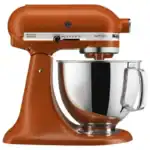
The Artisan Artisan Tilt-Head Stand Mixer (KSM150)
The KitchenAid Artisan Tilt-Head offers excellent versatility for most home applications, handling everything except the largest batches or most demanding dough recipes.
- Proven reliability across all mixing applications
- Tilt-head design offers easy bowl access
- 325-watt motor adequate for most home tasks
- Compatible with full range of KitchenAid attachments
- Strong resale value and widespread repair support
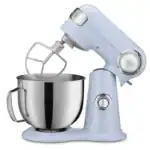
Cuisinart Precision Master 5.5-Quart (SM-50)
The Precision Master provides excellent value with strong performance across most applications, though with limited attachment options compared to KitchenAid.
- 500-watt motor handles most mixing tasks well
- 5.5-quart capacity larger than standard models
- 12 speed settings provide precise control
- Performs well with dense doughs and heavy batters
- Die-cast metal construction ensures durability

Ankarsrum Assistent Original (AKM6230)
The Ankarsrum excels particularly at bread making and heavy doughs, though its unique operation requires learning. Limited attachment options restrict versatility for other applications.
- Unique mixing action exceptional for bread dough
- Powerful motor handles any mixing challenge
- Large 7-liter capacity for big batches
- No overheating during extended mixing
- Swedish engineering ensures longevity
Tips for Maximizing Your Mixer’s Potential
Start with Room Temperature Ingredients
Most mixing applications work best with ingredients at room temperature. Cold butter won’t cream properly, while cold eggs can cause batters to curdle. Plan ahead by removing ingredients from refrigeration 1-2 hours before mixing.
Use the Right Speed for Each Task
Start slowly to mix ingredients without creating flour clouds or splattering, then gradually increase speed as needed. Dense doughs should be mixed at medium speeds, while whipping air into ingredients requires higher speeds for best results.
Don’t Overmix
Stop mixing once ingredients are combined. Overmixing can develop too much gluten in cakes and cookies, leading to tough textures. Look for visual cues like smooth, even consistency instead of relying on arbitrary mixing times.
Invest in Quality Attachments
Official attachments generally work better and last longer than generic options. Think about your cooking interests when selecting attachments—pasta makers for Italian food lovers, meat grinders for those who want more control over their protein sources.
Maintain Your Investment
Clean attachments immediately after use, check beater-to-bowl clearance regularly, and store attachments properly to prevent damage. Annual professional service for heavy users can help prevent issues and extend their lifespan.
Uses of a stand mixer for beginners
Make sure to choose a mixing bowl with enough capacity. If your recipe requires proofing and you plan to proof in the bowl, choose one with enough room for your dough to double in size. Though bread dough starts out very wet, as you add flour, the dough will become tougher to mix, so use a strong spoon or spatula. Baking is all about precision, so make sure you get the most accurate measurements by weighing ingredients with a scale.
Video – Uses of a Stand Mixer
Credit – KitchenAid


